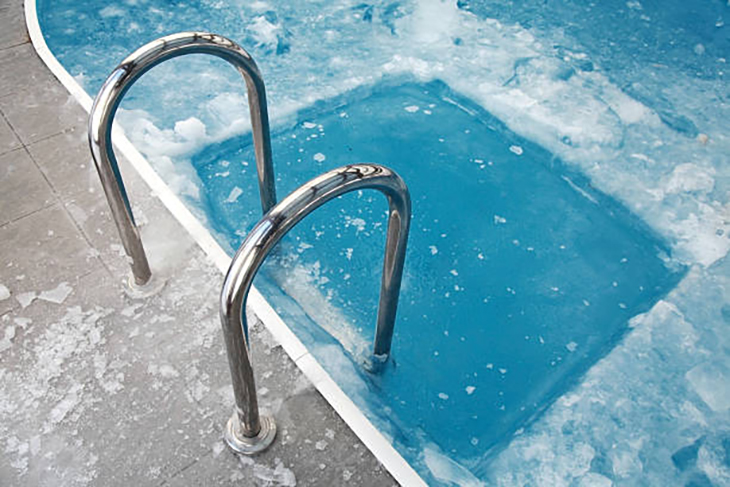
The use of cold exposure as way to promote good health has been done since the ancient times. This method has dated back many centuries. People have read up on it and have studied its benefits. But how effective or true is it?
As for its practice in modern times, cold exposure has been used essentially as a way to reduce muscle soreness. This also helps to promote muscle recovery after a grueling activity. However, there is more to the traditional cold exposure than meets the eye. Research shows that this may also improve the following:
- Glucose and lipid metabolism
- Decrease inflammation
- Enhance immune function
- Improve cognitive performance.
Some say that the benefits of cold exposure may be because of hormesis, which is a favorable biological response to what is seen as a minor stressor. When a body goes through hormesis, it triggers the protective mechanisms that provide protection from future, other more detrimental stressors. More importantly, many believe that exposure to cold activates the brown adipose tissue (or often referred to as BFAT), which is the fatty tissue that plays different roles in terms of heat production.
As for the Europeans who have been into the practice, cold water immersion see this as a fortifying activity. While it may all seem like a belief only practiced during the ancient times, the science behind this unconventional medicinal practice is actually so much better than expected.
In the latest review that came from more than 100 studies, scientists were able to determine that one of the most significant changes that happens to the body when exposed to cold air, and more importantly, cold water, is that the white fat adipose tissue is converted into brown fat adipose tissue. What does this exactly mean.
Essentially, BFAT is very much like the “working fat,” instead of what people often think of as storage fat. The difference between the two kinds of fat is that the BFAT burns calories in order to maintain body temperature to ward off the cold. As for the “bad” white fat, this simply works to store the energy up.
Experts often say that by leveling up the popularity of cold exposure to air or water, sometimes called “cryotherapy,” this will have a beneficial impact on fats because this could stop the onset of obesity and other cardiovascular diseases. Hence, when you immerse yourself in cold water during the winter season, this has been discovered to reduce the risk of health problems such as diabetes, because the body increases insulin sensitivity and decreased insulin concentration in a significant fashion.
A hormone called adiponectin is produced by BFAT. This has a crucial role in protecting the body against insulin resistance, diabetes, and other diseases. The effect it has on insulin worked for both experienced and inexperienced swimmers.
There is also another major benefit to cold water immersion that doesn’t relate to obesity. If you are immersed in 40°F water up to your neck, your production of norepinephrine in your bran goes up to as much as 300 percent, and this happens in just a span of few minutes. However, a dunk is long enough to convert your WFAT cells to BFAT cells and done in more lower temperatures of 57°F, this has the ability to increase norepinephrine by as much as 500 percent.
For those unfamiliar with it, norepinephrine is very much like the fight-or-flight production of adrenaline. This brings a positive elation, which is a beneficial feeling. More importantly, this is also a neurotransmitter that aids in speeding up brain activity.
The study made was carried out by The Arctic University of Norway and University Hospital of North Norway “From this review, it is clear that there is increasing scientific support that voluntary exposure to cold water may have some beneficial health effects,” said lead author James Mercer. He is from UiT.
“Many of the studies demonstrated significant effects of cold-water immersion on various physiological and biochemical parameters,” but, he also said, “based on the results from this review, many of the health benefits claimed from regular cold exposure may not be causal.”
“Instead, they may be explained by other factors including an active lifestyle, trained stress handling, social interactions, as well as a positive mindset,” he elaborated at the end.
Mercer was very careful in wording his conclusions. As for the other researchers, they are actually more aggressive in sharing their thoughts. Popular science communicator Rhonda Patrick Ph.D. has also written her own review of the literature, and while the obligatory “may” word was said before she made any conclusion, she has shown to feel more strongly about the idea and seems to think that the results she has seen are more than causal.
“Studies in animals and humans have indicated that brown fat can improve glucose and insulin sensitivity, increase fat oxidation, and protect against diet-induced obesity,” Patrick said in her study.
“Cold exposure also increases brown fat volume, drives glucose uptake, and increases oxidative metabolism in brown fat. Cold-induced glucose uptake in brown fat exceeds the rate of insulin-stimulated glucose uptake in skeletal muscle in healthy humans.”
Right now, there are thousands upon thousands of papers that talk about the physiology of those who are engaged in an active lifestyle, but only a small percent of these really go deep or talk at all about cold-water immersion. The clear changes that happened in key cardio-metabolic markers can really be persuasive. As for those who are thinking that a cold bath or going swimming in a cold pool, the findings may actually makes more sense than what people originally believed.



